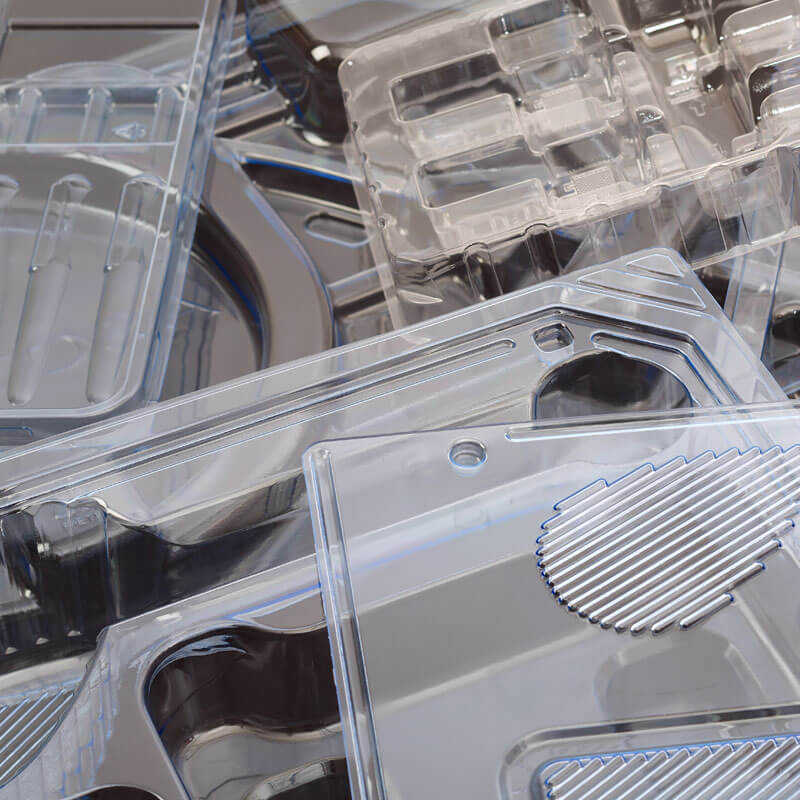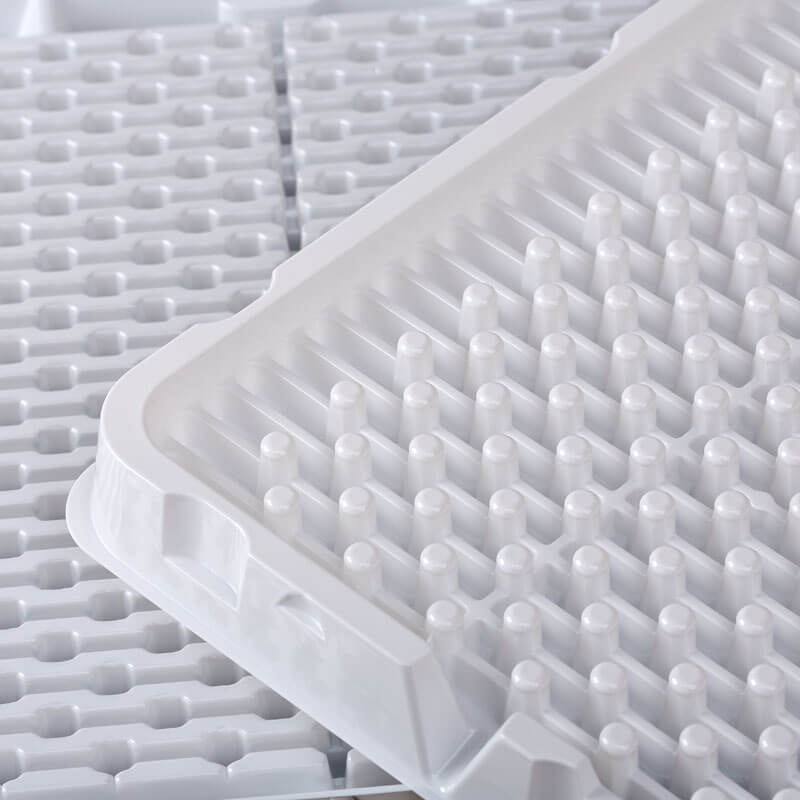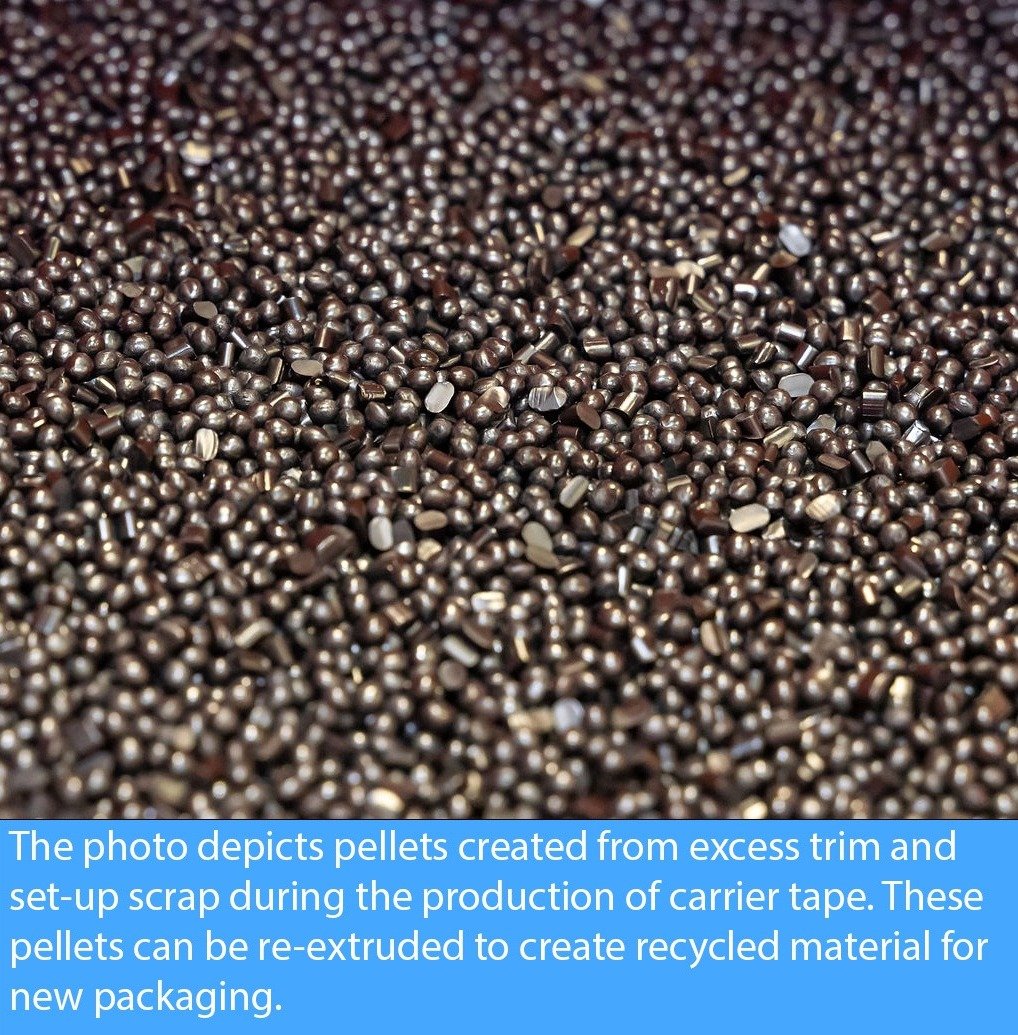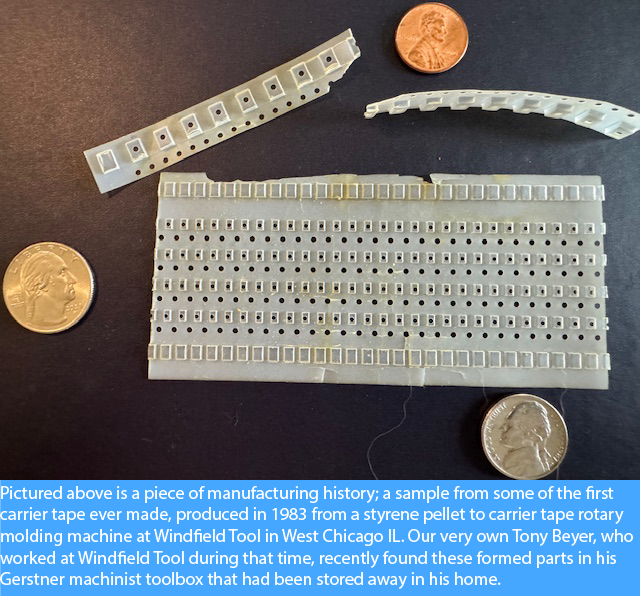Earth Day at Tek Pak: Shaping A More Sustainable Future
The thermoforming industry, responsible for everything ranging from food packaging, small electronics shields, and even medical trays, has been...

Every day, millions of people interact with and use numerous items made through a thermoforming process. What is thermoforming? Merriam-Webster defines thermoforming as a product manufacturing process that gives a final shape to a product (typically plastic) with the aid of heat, a mold, and usually pressure. More specifically, thermoforming starts with heating a plastic sheet to a temperature that makes it flexible to stretch and shape into a precise shape in a mold. The cooled item is cut or trimmed to produce a functional product.
Packaging products created with the thermoforming process include several different thermoforming processes. Each process has unique advantages and disadvantages, depending on the type of material used. While each process differs, many of the same components are required. For example, some combination of heat, vacuum, or pressure is almost always needed to manipulate the plastic into a mold.

Depending on the project, product, and process, several types of plastic and materials are used in the thermoforming process. Each project's requirements and characteristics are unique, which help determine the type of plastic selected, such as polystyrene, PET, polypropylene, polycarbonate, etc. Some plastic products manufactured with thermoforming are considered short-term or one-time use, such as items used in medical and pharmaceuticals, food packaging, and many more. This type of packaging product is referred to as a thin-walled package. More durable plastic products like that seen in an automobile, an airplane, or numerous other manufactured durable items require thicker walls that will stand the test of time of repeated use for years.
Are you interested in becoming part of the Diversity 2025 vendor project for Tek Pak? Diversity is felt to include all similarities and differences we each possess based on, but not limited to, the characteristics we were born with, experiences had, and choices made. Tek Pak embraces a working relationship with a multiplicity of vendors and suppliers.
Learn More
Thin-walled thermoforming is a high-quality, cost-effective option for both small and large quantities. When embarking on a new thermoforming project, it's always a good idea to consider the following thermoforming process options when deciding on the forming process.
Vacuum Forming- Plastic sheet is heated, and a vacuum is used to remove the air out, thus shaping the plastic over the form.
Pressure Forming- The process is similar to a vacuum with the addition of a press tool to create a more detailed finish.
Mechanical Forming- Using a mechanical force, the heated sheet fills the area between the plug and mold, forming a detailed part.
Drape Forming- A less expensive thermoforming process when the pattern is pressed onto the heated sheet.
Matched Mold Forming- Used when accuracy is important involving a male and female mold.
Twin Sheet Forming- Joining two plastic sheets together to create one item.
Thin Wall Thermoforming Materials
Another significant thermoforming consideration includes the project gauge requirements; heavy versus thin. The thickness of the plastic fed into the machine, the process applied, and the desired outcome thickness all determine the quality of the final product. The gauge is the part wall thickness at the end of the process. Knowing how thick the walls must be to create a successful part can help narrow down the process choices. Below is the rule of thumb guides when choosing the correct gauge; heavy or thin.
Part Thickness
Thermoformed packaging is a deep and expansive science all of its own. New and exciting breakthroughs in process and material sciences are happening every day. Taking the time and involving experts in the field is critical to designing and producing a well-made, cost-effective, and appealing package. If you have any questions or would like to discuss your project confidentially, feel free to contact the packaging experts at Tek Pak.

The thermoforming industry, responsible for everything ranging from food packaging, small electronics shields, and even medical trays, has been...

The world of electronics relies on countless tiny components, from resistors to integrated circuits, that work together to power our devices. But...

Thank you to everyone who took time out to vote for Tek Pak’s Carrier Tape nomination in the Illinois Manufacturers’ Association’s (IMA) annual “...